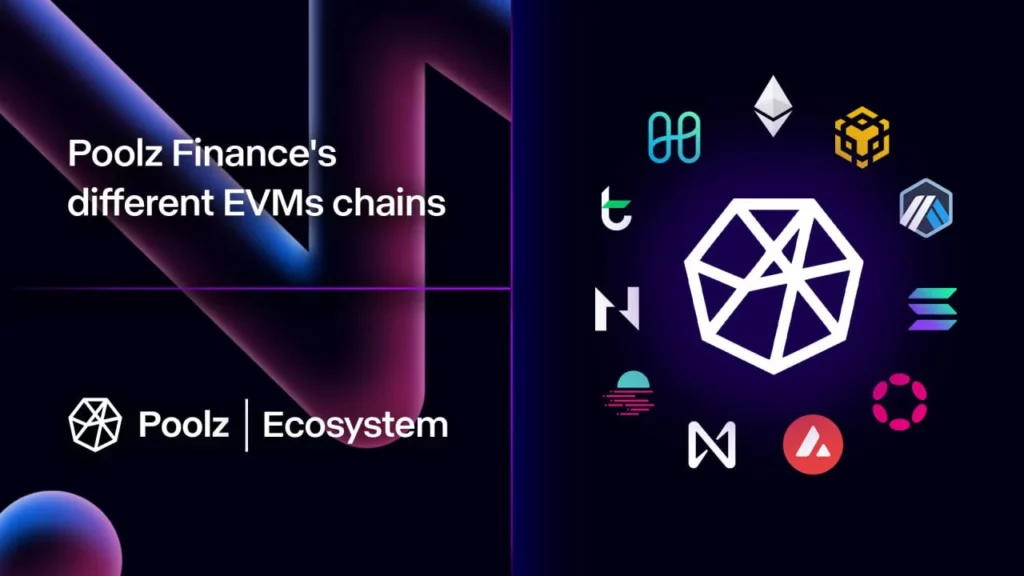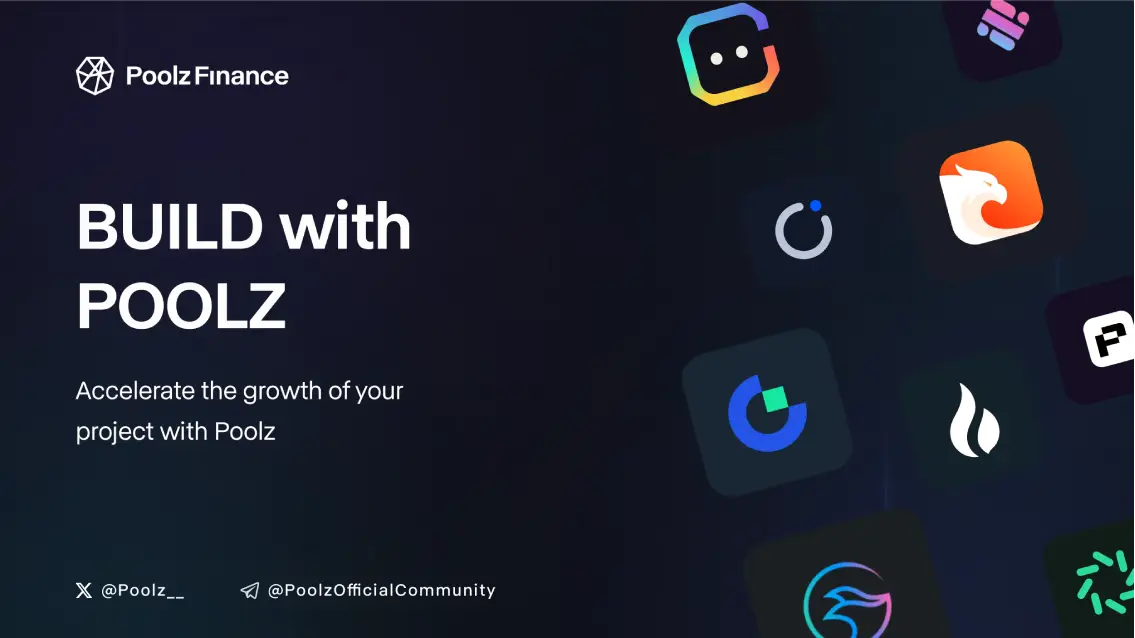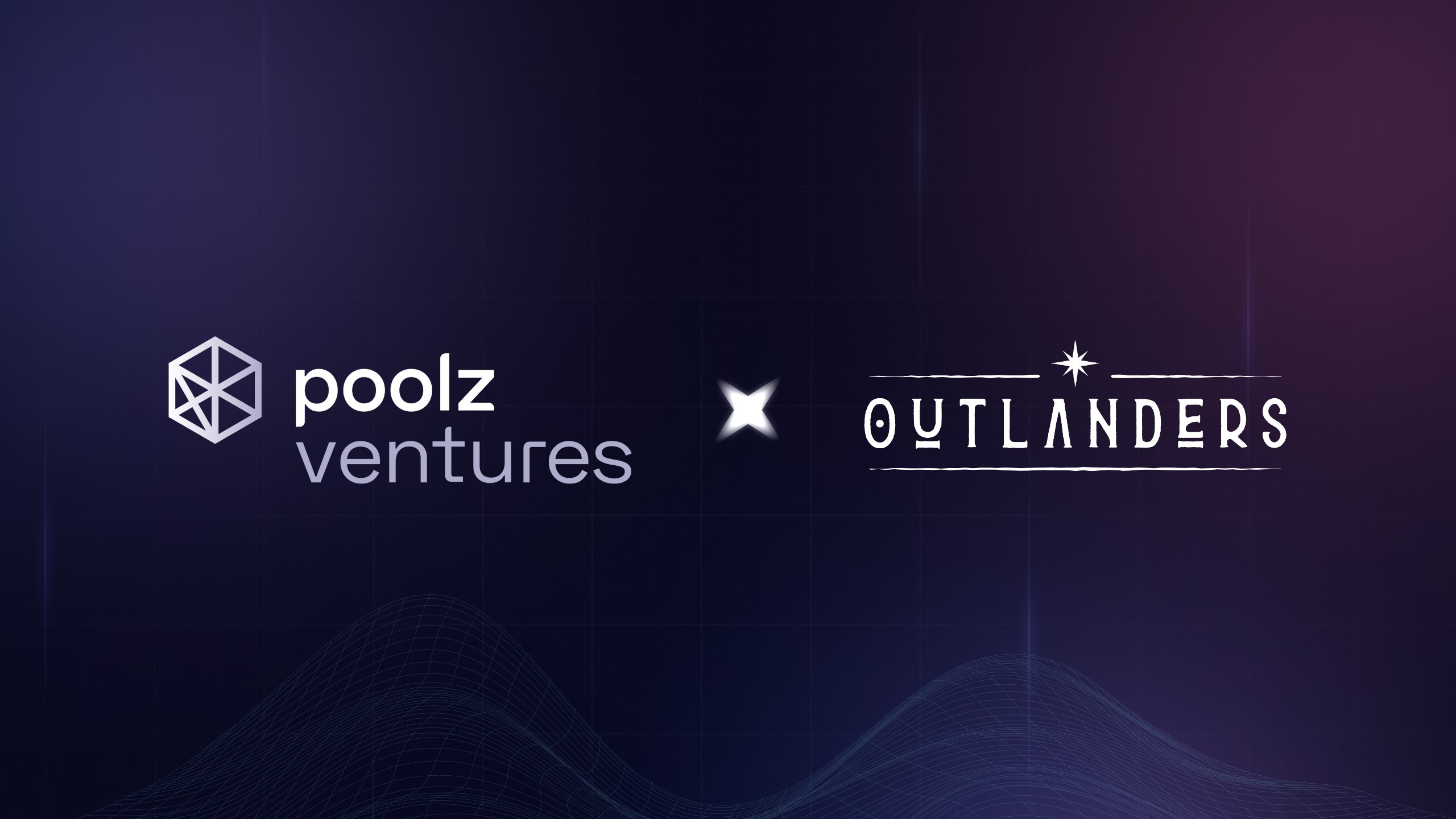Back in 2008, our financial system witnessed a notable disruption. While the history of blockchain traces back to its creation to solve the Byzantine Generals’ Problem, the adoption of blockchain by Bitcoin creates an even greater wave, showing a system with a decentralized, trustless, and seamless structure for financial transactions.
However, the development of blockchain in the financial sector does not stop here, one of the recent trends is the introduction of different techniques that provide crypto and blockchain-based projects with liquidity while presenting market participants with investment opportunities.
One of the leading ecosystems in this regard is Poolz Finance. Our ecosystem was originally built on Ethereum blockchain and now integrated with several EVM-blockchains to enhance accessibility to opportunities.
Let’s take a look at the EVM blockchains and the usage by Poolz Finance.
Explaining EVM and EVM Chains?
Ethereum Virtual Machine is a software or computation machine that enables the deployment of smart contracts to facilitate blockchain interoperability and compatibility. This has effectively eliminated user navigation barriers in the blockchain and DeFi ecosystem. EVM-compatible blockchains mimic the Ethereum blockchain by computing every new block added to the Ethereum network. This enhances seamless transactions and the easy deployment of decentralized applications on these blockchains.
Poolz Finance EVM-compatible blockchains-
Ethereum ($ETHER):
Poolz Finance was originally launched on the Ethereum blockchain to provide open-source and peer-to-peer features that facilitate investments without intermediaries. Even better, the blockchain comes with a decentralized, resilient and secure structure that makes our platform secured for users.
The introduction of Ethereum blockchain is an impressive development in the crypto space because it introduces a programmable blockchain that allows decentralized application deployment. Vitalik Buterin presented the idea in his whitepaper released in 2013. Following this, the Ethereum blockchain was developed in January 2014, raising over $18 million, and the project was eventually launched in 2015.
Since its launch, Ethereum has enjoyed numerous developments, including the recently completed Ethereum Merge. The Merge introduces a network transition from Proof-of-Work to a Proof-of-Stake consensus mechanism for transaction validity. However, it not only enhances security; it also reduces Ethereum’s carbon footprint by 99.95%.
Ethereum operates on nodes run by different people across the globe and it currently hosts over 4000 projects and 53.3 Million smart contacts, with over $410 Billion securely stored in over 96 Million wallets.
Features:
- Decentralized structure
- High gas fees
- Ethereum token is an acceptable collateral for loans
BNB Smart Chain ($BNB):
BNB Smart Chain features a centralized system that separates it from other blockchains with a decentralized structure. The platform uses the BNB token as a utility and governance token.
BNB Smart Chain remains one of the largest blockchains in the crypto space today, hosting the largest cryptocurrency exchange, Binance Exchange, along with 606 protocols and over 4,700 dApps at the time of writing. It is also an EVM-compatible blockchain that allows users to navigate quickly and enables developers to deploy Ethereum decentralized applications on the BNB Smart Chain network.
One of the notable integrations of the Poolz Finance on BNB Smart Chain is the deployment of its token, $POOLX, on the Binance decentralized wallet. Hence, to invest in the Poolz ecosystem, users can store the $POOLX token on the Binance decentralized wallet, lock tokens on the Poolz dashboard, and access projects on the BNB Smart Chain.
In addition, the claiming of several project tokens was done on the BNB Smart Chain. For instance, our ecosystem spearheaded the IDO of Carbon, an impressive and secure web browser launched on BNB Smart Chain. We also host the IDO of ChainGPT, a project deployed on the BNB Smart Chain to provide users with an AI model for trading.
Like other scalable alternatives, BNB Smart chain adopts the Proof-of-Stake consensus protocol for validation. Here BNB holders are allowed to vote for 41 validators, out of which 21 validators are selected to validate on-chain transactions. The remaining 20 validators are block producers. Validators in the BNB Smart Chain ecosystem are rewarded with miners’ fees.
Features:
- Centralized and decentralized wallets
- Create 1 block every 3 seconds
- Host one of the largest crypto exchanges
- Sustainable and regulatory-compliance framework
Polygon ($MATIC):
Polygon, formerly Matic Network, was introduced in 2017 by Jaynti Kanani, Anurag Arjun, Mihailo Bjelic, and Sandeep Nailwal. Polygon is one of the largest EVM-compatible blockchains with a $1.1 Billion Total Value Locked (TVL) and over 400 protocols.
Polygon is another EVM-compatible blockchain hosting project with their IDOs on Poolz Finance. One of those projects is the Medieval Empire, an immersive game with historical structure. Medieval Empire presents users with an earning mechanism as a result of fighting, exploring the gaming ecosystem, or simply collecting war relics.
Presenting users with investment with lower gas fees and seamless transaction with the Polygon native token, $MATIC, Poolz fosters the claiming and distribution of the $MEE token on polygon.
Aside from the lower gas fees, Polygon uses the ZK-rollup protocol to proffer users with effective system scalability. This layer-2 ecosystem presents users and developers with staking and an ecosystem dApps deployment, respectively.
Features:
- Lower gas fees
- Allow creation of EVM-compatible side chains through SDK
- It uses a modified Proof-of-Stake for Consensus
- Fast transaction
ARBITRUM ($ARB):
Arbitrum is another excellent blockchain designed with an unmodified EVM and Optimistic-rollup-based Layer-2s protocol for scalability. The blockchain enables the deployment of dApps by developers while presenting users with a cheap and highly efficient platform for transactions.
Artbitrum can reportedly perform 45,000 TPS under normal conditions and 40,000 TPS under certain network conditions. With its EVM structure, developers enjoy easy deployment of dApps and benefit from Ethereum’s excellent layer-1 security.
Aside from its faster transaction and high throughput, Arbitrum features a higher level of decentralization through its DAO structure dedicated to facilitating decision-making while involving its native token holders. It is also essential to note that the blockchain platform has notable partnerships, including the Lightspeed Venture Partners fund. The recent introduction of its native token ($ARB), with a 10 billion initial supply, as a governance and utility token also enjoyed high adoption.
Currently, there are over 300 dApps on the Arbitrum blockchain with over $1 billion in TVL (Total Value Locked)
Features:
- Extensively decentralized structure
- Higher transactions per second
- Enhanced security
AVALANCHE ($AVAX):
Avalanche is a decentralized, open-source blockchain launched in 2020 after gaining successful financial support from leading Venture Capital Firms and private and public tokens sale. Avalanche also uses the Proof-of-Stake consensus mechanism for transaction validation.
Unlike other EVM-compatible blockchain, Avalanche features its own Avalanche Virtual Machine, a computation engine that is similar to EVM and allows the deployment of EVM-compatible decentralized applications on the platform.
The platform reportedly has over 8 Billion wallet addresses with over $1.75 Total Value Locked. Avalanche is also an efficient option for blockchain projects thanks to its near-instant finality.
The introduction of the Avalanche NFTrade remains one of our notable collaborations with the blockchain. With the platform, creators can create and sell NFT on the blockchain.
Features:
- Favorable carbon
- Designed with a distinct Avalanche Virtual Machine
- Enhance validity through interconnected and dynamic subset of validators
Conclusion
The development in the Poolz Finance ecosystem has created a platform that ensures users protection and investment security. Similar to this is the development in the blockchain that has improved the efficiency of blockchain technology through Ethereum Virtual Machine
EVM compatibility is a core feature of interoperable blockchains like Binance and Polygon. By adopting EVM, developers can create smart contracts that are portable to and from the Ethereum network. This eventually eliminates the hurdles of facilitating transactions between blockchain-based dApps and enhances participation.
One of the early drawbacks of EVM is an increase in fees and seldom network congestion; however, the introduction of layer-2 protocols and ZK-rollups has effectively reduced this problem and paved the way for a more seamless system with lower gas fees.










